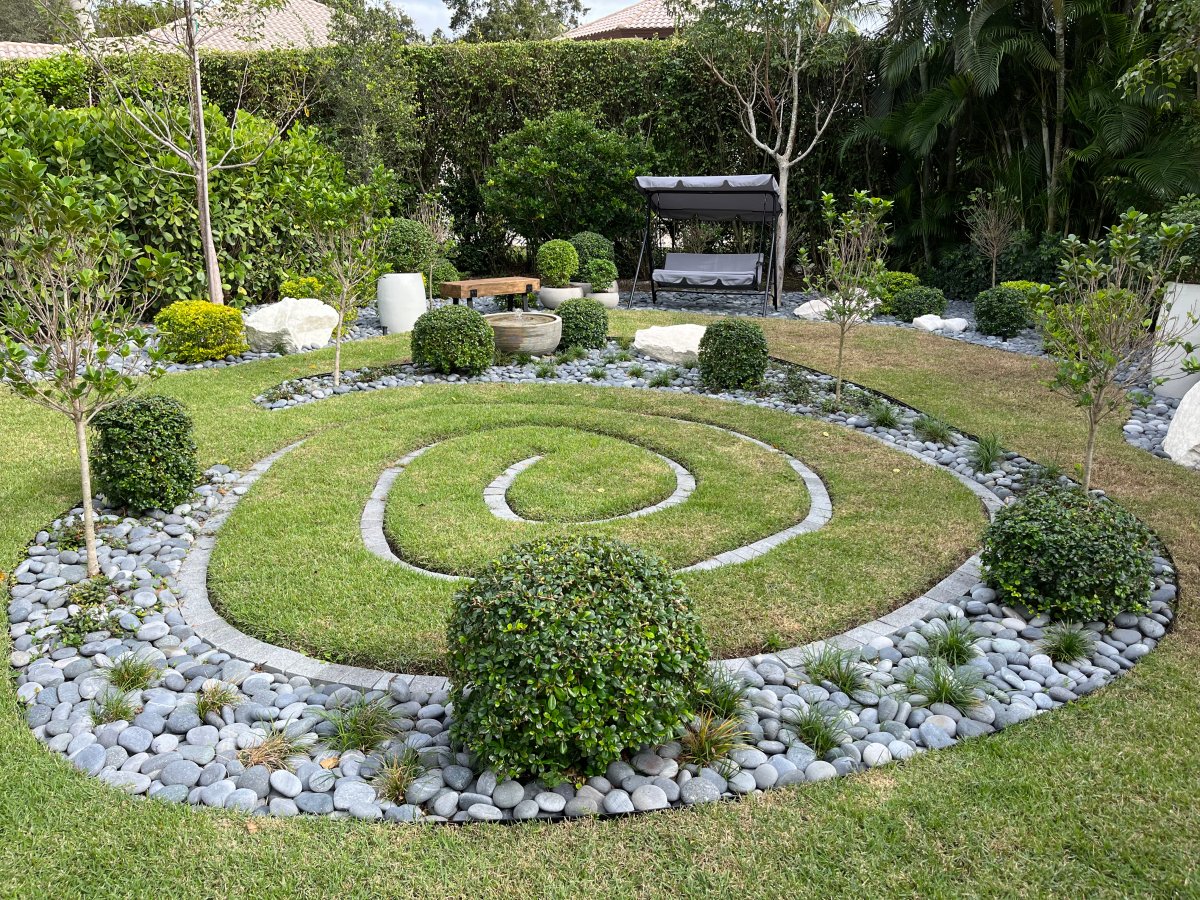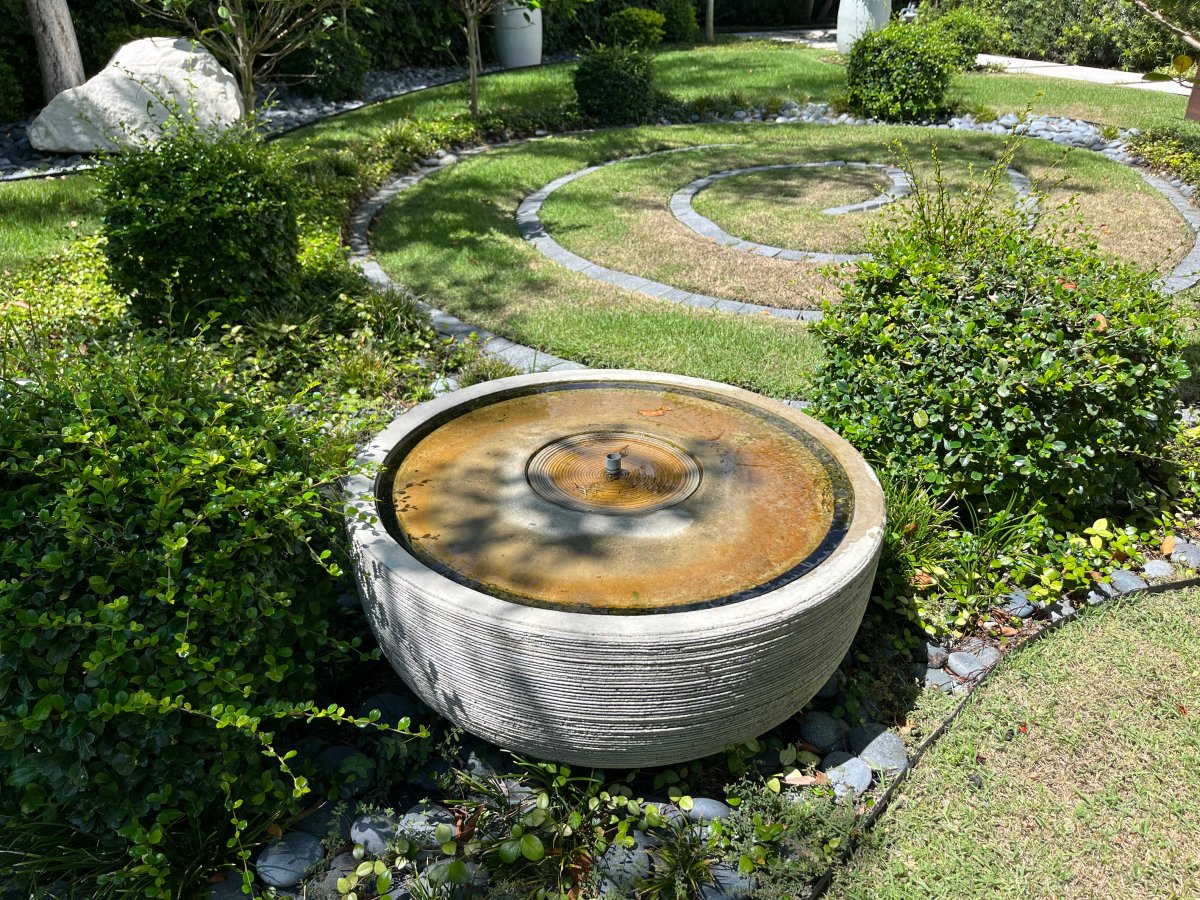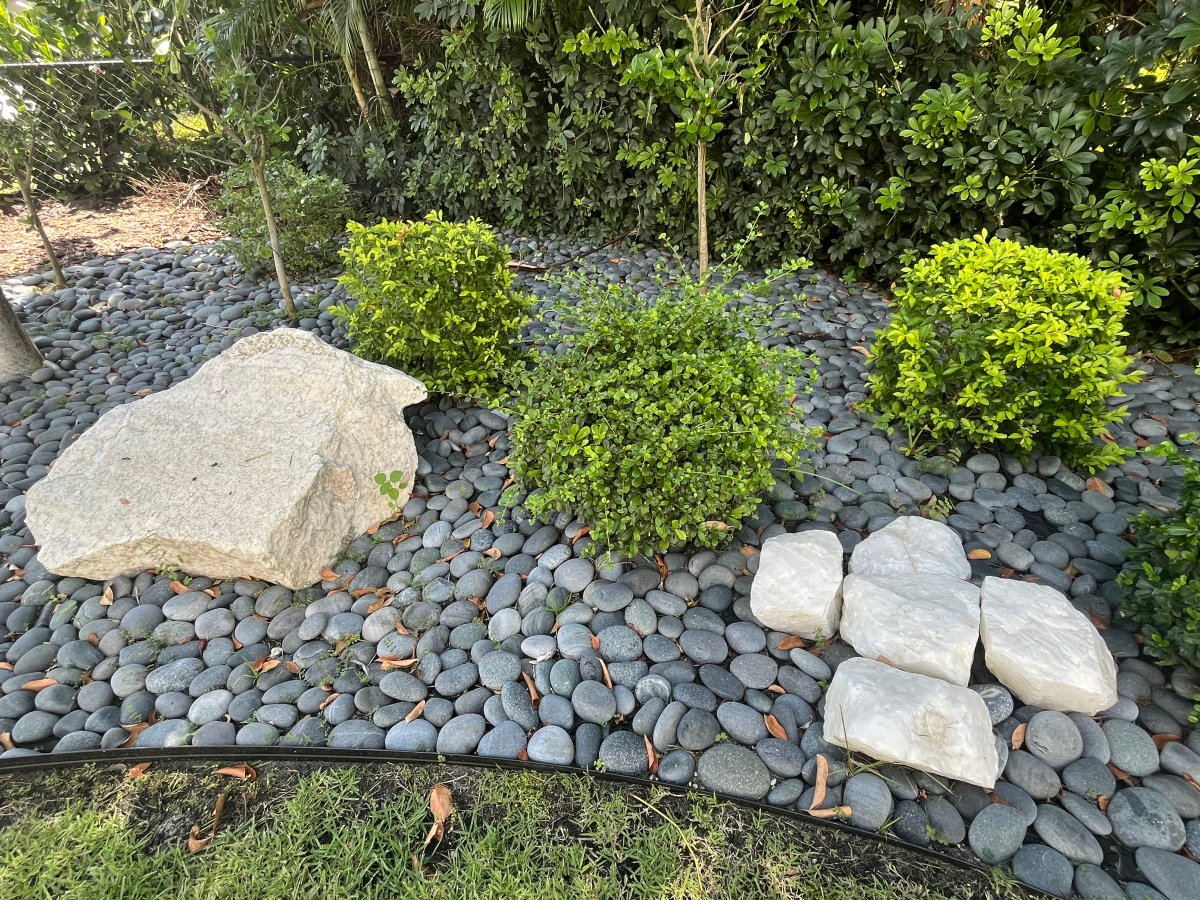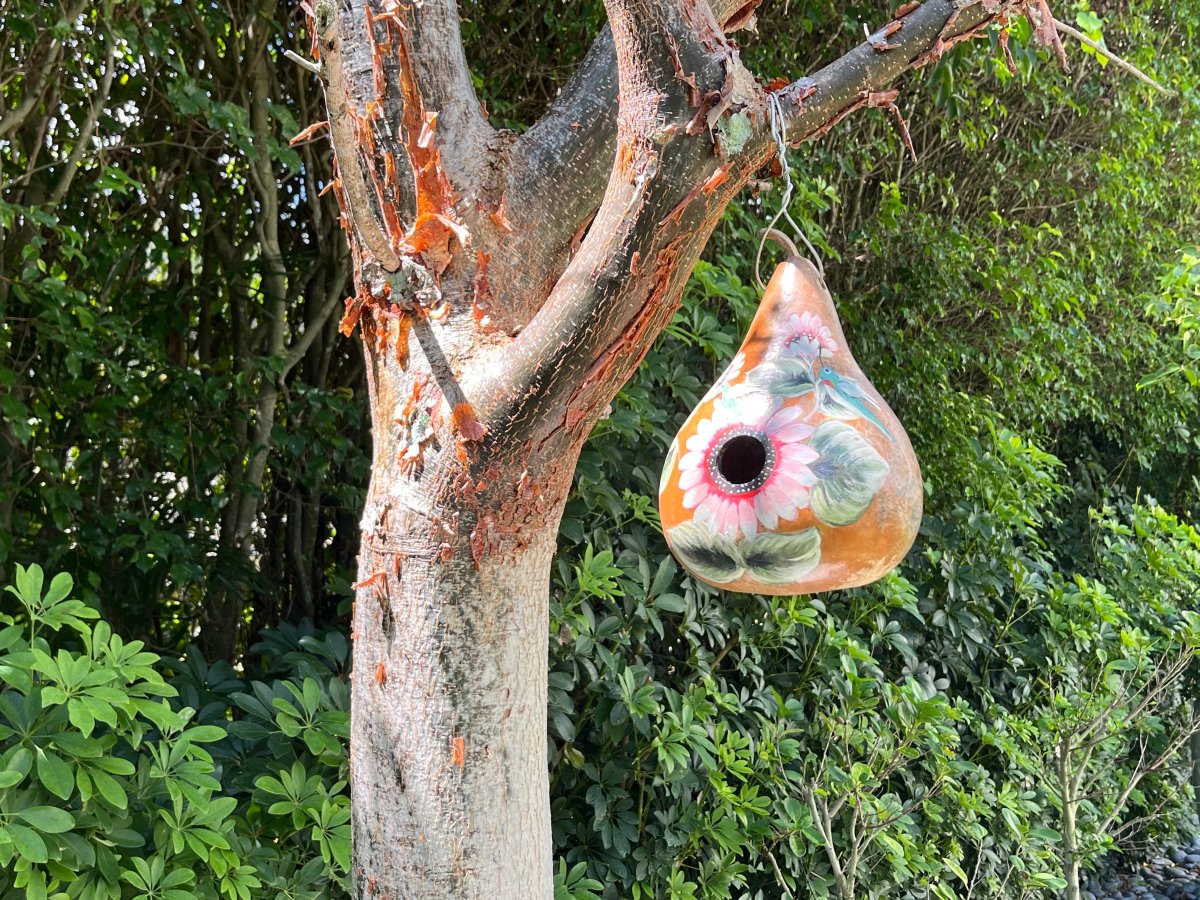

We may earn revenue from the products available on this page and participate in affiliate programs. Learn More ›
When we built our new house, it was a chance to fulfill some lifelong dreams. I knew I really wanted a spot outside to relax like I was on vacation at a spa resort. I craved a quiet, calm place to find balance and reduce stress. Our lot is pie-shaped with a decent size section of grass on the left side of the property separate from the rest of the backyard. It was the perfect location to bring my dream to life.
Now the fun—and hard work—began. I spent endless hours on Pinterest and home and garden websites to find images representing what I envisioned to share with the landscape designer. I also visited gardens in my neighborhood and at local museums, botanical gardens, and hotels for inspiration. This process was often overwhelming because there are so many products, layout options, and design styles available, such as Japanese Zen, Chinese, Southwestern United States, Traditional English, and Middle Eastern.
The Design Process
It’s beneficial to design a meditation garden with several components that fill your senses, such as vivid but calming colors, soothing sounds, interesting shapes and textures, comfortable places to sit or lie down, and lovely aromas. The best part is that you can choose the elements that you want for your space based on your personal preferences and goals for the garden.
The first iteration of our design was off the mark, since it proposed to fill the entire area with pebbles and stones. I wanted to retain as much grass as possible to achieve a more natural look, so back to the drawing board. Fortunately, after some back and forth and more picture sharing, the landscape architect designed the perfect Zen-like meditation garden. Here are the main elements of my meditation garden to help inspire your own dream garden designs, whether you hire a pro or decide to build it yourself.
Water
Water is known to give us a sense of peace and serenity. We become so focused on the water that we enter a mindful state, which is why adding water elements to a meditation garden is a must-have. Plus, the calming sound of running water can mask traffic and other distracting noises. We installed a water fountain bowl that matches the stones and boulders.

Greenery
Besides green being a soothing color, greenery can serve as the foundation of a meditation garden. Plants, shrubs, hedges, and trees can be used in a number of ways to create an isolated area separate from the rest of the backyard. They can serve as a fence, sound or vision barrier, or create an artistic visual interest. I love the look of modern, tightly shaped shrubs and have several sphere-like topiaries in the garden. There are also small and medium-size trees of varying heights and species throughout the space.
Seating
I chose two seating options in the garden to relax: a meditation bench and a porch swing with a canopy. Nothing beats simply sitting in the garden and taking in all the sensations that nature brings, from the refreshing breeze on my skin to the sounds of the trickling water fountain. The swing also provides a much-needed shady spot in the garden.
Statues and Sculptures
While some people like to include different types of statues and sculptures that have meaning to them—such as animals, Buddha images, or small pagodas—so far I’ve only opted for some attractive white boulders to add a sculptural effect to the garden. I’ve left open the opportunity to add statues or sculptures over time if I see something I love.

Stones, Pebbles, and Sand
As a contrast to plush elements like grasses, plants, and bushes, these solid materials provide a sense of strength to the meditation garden. Japanese Zen gardens, also known as Japanese rock gardens, include these simple elements to help soothe and heal us. Our design includes medium-size stones around the perimeter of the garden and labyrinth (more below).
Raised Garden Bed
Another element that most people might forget is something for our sense of taste. We included a raised garden bed to grow vegetables. We’ve had great success growing cherry tomatoes and green peppers. In fact, we had so many cherry tomatoes sprouting that it was hard to keep up. Creating the need to pick vegetables also provides an incentive to go out and relax in the meditation garden more often.
Bird Feeder/Birdhouse
Part of the experience of sitting outside in the garden is being able to enjoy all the birds that visit, especially listening to their birdsong. I hung a bird feeder made of a beautifully painted gourd that I purchased at an art festival to attract more birds. I plan to add one or more bird feeders to the garden as well.

Labyrinth
I saved the best for last. The most unique aspect of my meditation garden is the labyrinth. After being introduced to a labyrinth on vacation, I knew I wanted to try and add one to my meditation garden.
Often found at houses of worship, luxury spas and community centers, labyrinths date back about 3,000 years in a variety of cultures around the world. These meditation tools are circular or spiral paths that have a single route leading in and out of the center. Labyrinths are primarily used for mindful walking, a calming practice that allows people to focus on the present moment by tuning into the body’s sensations.
You can practice labyrinth walking meditation while barefoot or while wearing shoes, with the goal of moving slowly and being aware of each step and breath, without having a destination in mind. I enjoy taking my shoes off and walking the labyrinth in my garden. It’s helpful to choose grass that feels comfortable to ensure the best experience.
The landscapers were a bit surprised when we asked to build a labyrinth since it’s such a rare request, but they enjoyed the challenge. Given the limited space, we opted for a small, simple spiral using bricks. The walking path is grass, so it kept the area looking as green and natural as possible. Plus, this design required limited supplies, helping to save money and labor. We maintain the grass path with mowing and we occasionally weed.
